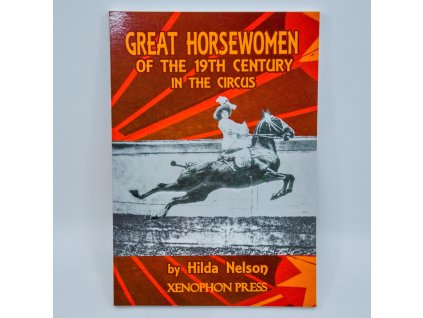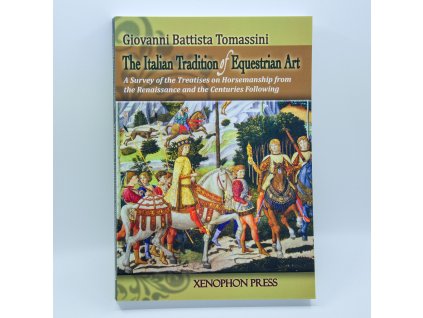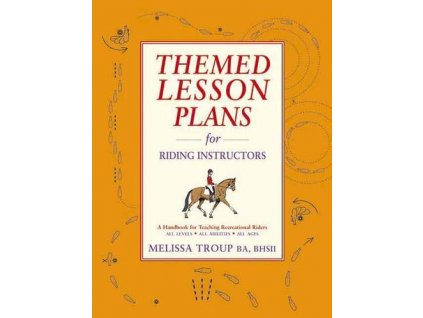Divide and Conquer Book 1 + 2 – François Lemaire de Ruffieu
Související produkty
Detailní popis produktu
Calm, Forward and Straight must always serve as a guideline during the training and the order should not be interchanged. On this subject, all Riding Schools worldwide agree. These schools diverge only in their style due to the culture of their own country. In these volumes, I recapture and explain the foundations provided by the great Masters. I have provided appropriate exercises to recreate, develop, and enhance the horse’s natural gaits that should be the common denominator of all riding styles and training disciplines, including Dressage, Jumpers, Hunters, Western, Pleasure, and many others. Book One includes the training progression from the beginning of the elementary level. The training mastered in Book One will be necessary to accomplish the collected and extended gaits, pirouette at the canter, tempe flying changes of lead, piaffe and passage in Book Two. This work study explains how to Divide and Conquer the horse's body parts. To be able to properly perform the exercises, the horse should be able to find the appropriate head position independent of the rider. If these exercises, alone, do not result in the horse being able to find the appropriate head and body position, I explain the prerequisites to correctly set the horse's head: cession (yielding) of the mouth and the flexion of the poll.
Divide and Conquer Book 2: Advanced Dressage Techniques
Just as small streams make big rivers, Divide and Conquer Book 1 explains a myriad of details on how to address each of the horse's body parts for training purposes. Divide and Conquer Book 2 regroups these details to show how to accomplish all of the upper level movements and provides several techniques designed to educate riders to achieve their short and long term goals.
In a clear and simple method, François Lemaire de Ruffieu describes all the longitudinal and lateral movements including flying changes of lead at close intervals, canter pirouette, piaffe and passage, along with patterns and exercises that develop them.
All techniques for the upper level movements employ the horse's natural reflexes to stimuli at their foundations. The techniques provide a sound basis of training for any level and any discipline.
Dressage is an Art, and as such, can be viewed in many different ways. History shows that some extraordinary riding masters were radically different in their theories: Riders physical characteristics and differences in horse breeding have influenced Riding Masters leaving us a rich history of techniques with which to educate our horses properly. Dressage tends to follow fashion. Nevertheless, the goals of dressage have always remained the same: render the horse agreeable, easy to ride, well-balanced, straight and responding instantaneously to the slightest aids. Dressage is a school of obedience as well as a school of thought.
François Lemaire de Ruffieu grew up in France. He was first trained by Master Jean Couillaud and graduated in 1967 from the Cadre Noir, one of the oldest and most prestigious riding academies in Europe. During his 6 years in the cavalry at Saumur and Fontainebleau, he studied and showed extensively in dressage, stadium jumping, three day eventing and steeplechase. He taught riding in Paris at the Military School of War. Since 1978, he has given clinic throughout United States of America and Europe. His students have won year-end high-score awards in equitation, hunter classes, stadium jumping, dressage, and combined training. Since 1988, he has been a panel member of the American Riding Instructor Certification Program and in 1996 he was awarded the title of Master Instructor. He currently lives in Florida.
Doplňkové parametry
| Kategorie: | Drezura |
|---|---|
| Záruka: | 2 roky |
| EAN: | 9780933316867 |
| Jazyk: | angličtina |
| Vazba: | pevná |
| Nakladatel: | Xenophon Press, 2016 |
| Rozměry: | 19.1 x 1.1 x 23.5 cm |
Buďte první, kdo napíše příspěvek k této položce.
Pouze registrovaní uživatelé mohou vkládat příspěvky. Prosím přihlaste se nebo se registrujte.
| Výrobní společnost : | Xenophon Press LLC |
|---|---|
| Adresa : | 7518 Bayside Road, Franktown, VA 23354-2106, UNITED STATES |
| E-mail : | xenophonpress@gmail.com |
.png)














